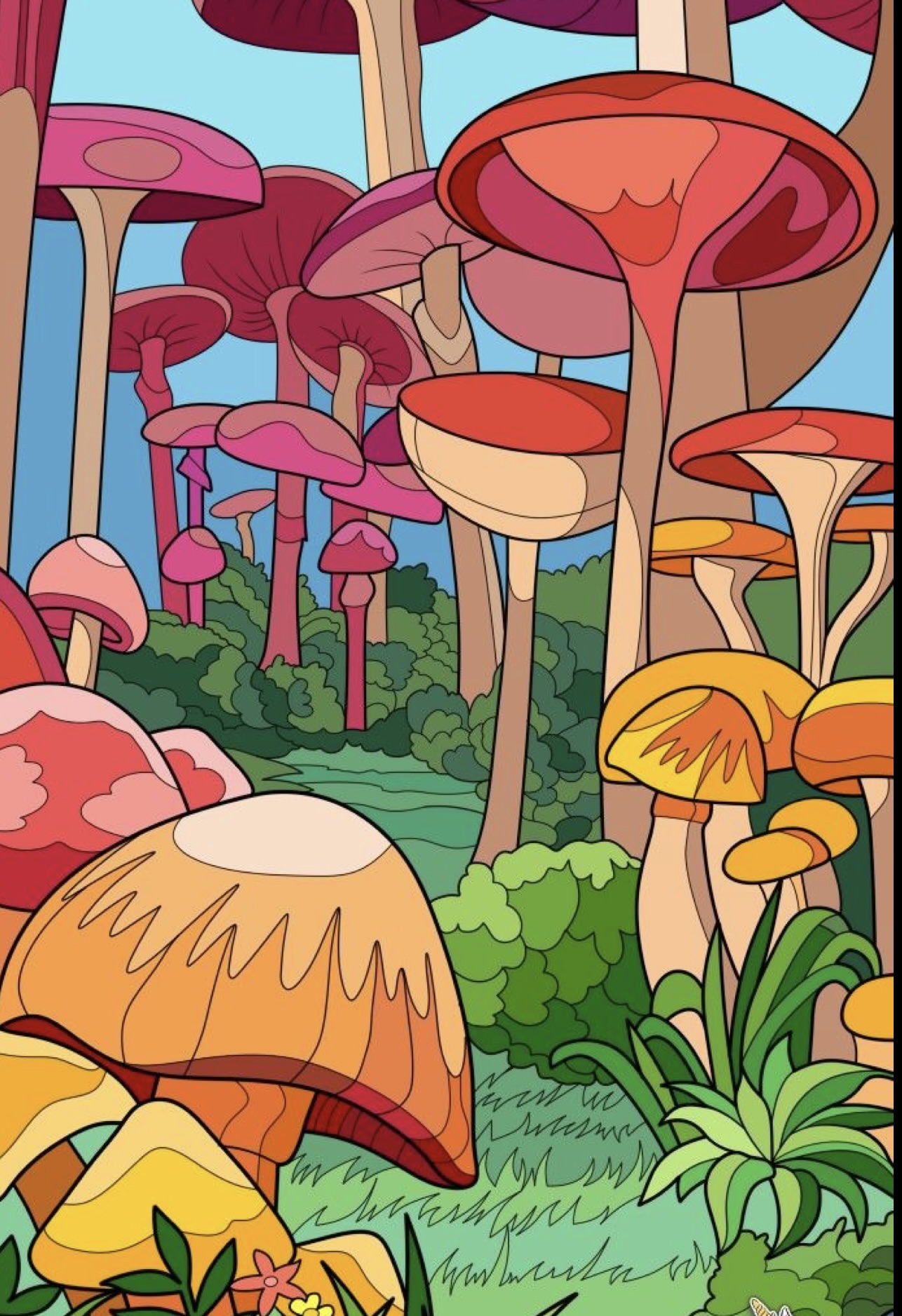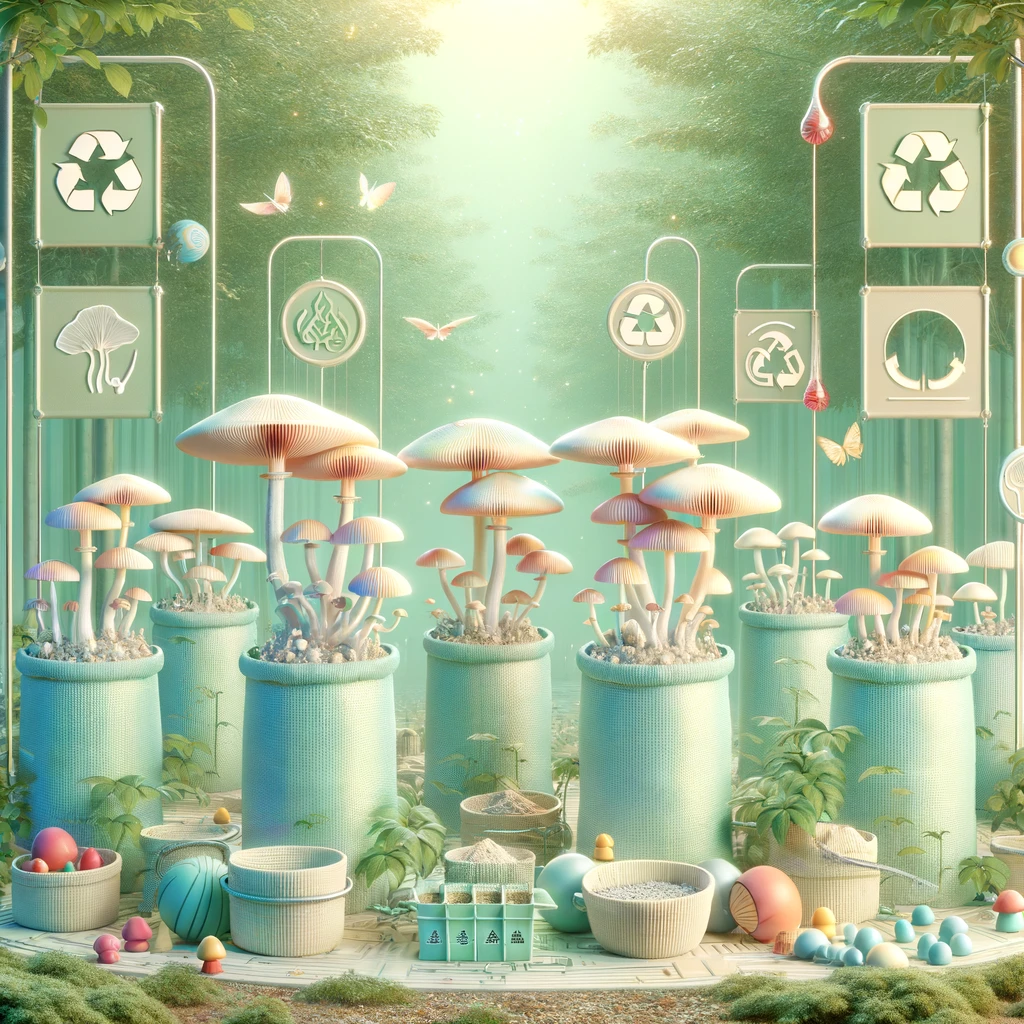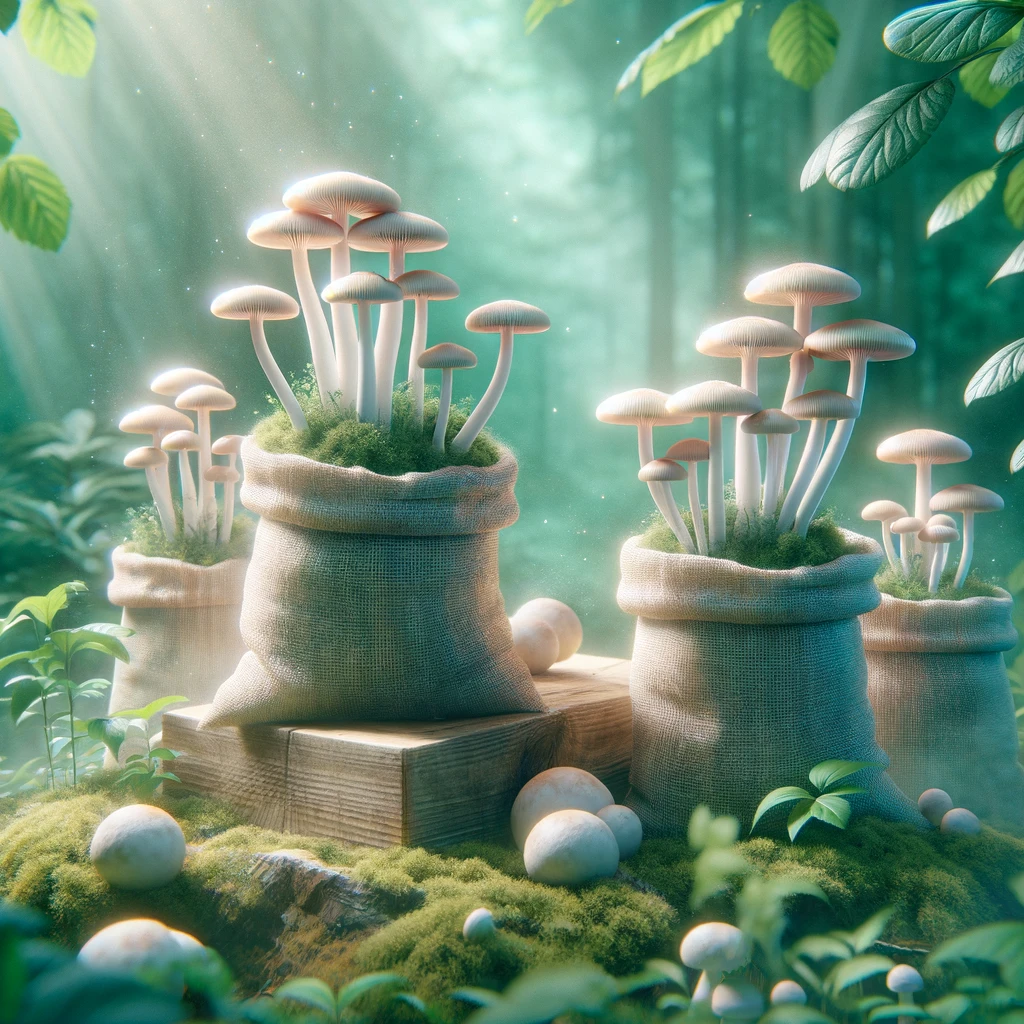


In the mystical realm of mushroom cultivation, the quest for sustainable and eco-friendly practices has become an integral part of the journey for cultivators worldwide. As the demand for magic mushrooms grows, so does the need for environmentally conscious methods. In this exploration, we delve into the realm of sustainable practices in growing magic mushrooms, with a particular focus on the innovative use of grow bags. From biodegradable materials to recycling initiatives, the magic of cultivation meets the wisdom of environmental stewardship.
1. The Rise of Eco-Friendly Grow Bags: Nurturing Nature from the Start
One of the forefronts in sustainable mushroom cultivation lies in the choice of grow bags. Traditional plastic bags, often used in the past, are being replaced by eco-friendly alternatives made from biodegradable materials. These biodegradable grow bags not only provide a suitable environment for mycelial growth but also leave a minimal environmental footprint.
Benefits of Eco-Friendly Grow Bags:
2. Recycling in Mushroom Cultivation: Turning Waste into Growth
Recycling plays a pivotal role in sustainable mushroom cultivation, allowing cultivators to repurpose materials and minimize waste. From substrate ingredients to packaging materials, a conscientious effort to recycle contributes to a circular and eco-friendly cultivation process.
Key Aspects of Recycling in Mushroom Cultivation:
3. Sustainable Mushroom Growing Systems: Harmony with Nature
Beyond just the materials used, sustainable mushroom cultivation extends to the overall growing systems and practices. Implementing eco-friendly systems contributes to a more harmonious relationship between cultivation and nature.
Components of Sustainable Growing Systems:

4. DIY Mushroom Cultivation with a Green Twist: Empowering the Home Grower
For home growers seeking sustainable alternatives, the DIY approach aligns with eco-conscious values. From creating compostable substrate mixes to repurposing household materials, the DIY mushroom cultivation movement fosters a sense of empowerment and environmental responsibility.
Green Initiatives in DIY Mushroom Cultivation:
5. Mushroom Liquid Culture and Spores: A Sustainable Inoculation Approach
The process of inoculating substrates with liquid culture or spores presents an opportunity to incorporate sustainable practices. Choosing environmentally friendly alternatives for spore syringes and liquid culture solutions contributes to a holistic approach to sustainability.
Green Choices in Inoculation Techniques:
6. The GROmagic Bag: A Contamination-Resistant, Eco-Conscious Choice
The GROmagic Bag, a leader in the world of grow bags, embodies the fusion of contamination resistance and eco-conscious design. Crafted with sustainability in mind, these bags offer a reliable and environmentally friendly option for cultivators aiming for both a contamination-free and eco-conscious cultivation experience.
Features of the GROmagic Bag:
7. Organic Mushroom Substrates: Nourishing the Mycelium Naturally
Choosing organic mushroom substrates contributes to sustainable cultivation by supporting the use of natural, chemical-free materials. These substrates promote the health of the mycelium while avoiding the environmental repercussions associated with synthetic additives.
Benefits of Organic Substrates:
8. Mushroom Air Filtration Bags: Balancing Sterility and Sustainability
Air filtration bags, a critical component in contamination prevention, can also be designed with sustainability in mind. The balance between sterility and sustainability is exemplified in these bags, which prioritize the prevention of contaminants while minimizing environmental impact.
Sustainable Features in Air Filtration Bags:
9. Community Initiatives: Cultivating Awareness and Collaboration
Sustainable mushroom cultivation extends beyond individual practices to community initiatives that promote awareness and collaboration. Engaging with local and online communities provides a platform for sharing eco-friendly practices and collectively working towards a more sustainable future.
Community-Centric Sustainability Practices:
10. Innovations in Eco-Friendly Packaging: Minimizing Footprints
As sustainability gains momentum in the cultivation of magic mushrooms, there’s a growing emphasis on eco-friendly packaging solutions. From minimalistic designs to compostable materials, packaging innovations are reducing environmental footprints in the journey from cultivation to end-users.
Advancements in Eco-Friendly Packaging:
11. Circular Economy in Mushroom Cultivation: Closing the Loop
The concept of a circular economy is gaining momentum in mushroom cultivation, emphasizing the importance of minimizing waste and maximizing resource efficiency. Growers are embracing practices that facilitate the circular flow of materials, reducing the environmental impact associated with cultivation.
Elements of a Circular Economy in Mushroom Cultivation:
12. Regenerative Agriculture Techniques: Enhancing Soil Health
Magic mushrooms, being fungi, have an intimate relationship with the soil they grow in. Adopting regenerative agriculture techniques not only enhances the health of the mycelium but also nurtures the ecosystems surrounding cultivation sites.
Regenerative Practices for Soil Health:
13. Energy-Efficient Indoor Cultivation: Illuminating the Path to Sustainability
Indoor cultivation, while offering controlled environments for mushroom growth, often comes with energy consumption challenges. Integrating energy-efficient practices and technologies ensures that the magic happens within a sustainable energy framework.
Energy-Efficient Indoor Cultivation Techniques:
14. Carbon Footprint Reduction Strategies: A Holistic Approach
As the global community strives to combat climate change, mushroom cultivators are exploring ways to reduce their carbon footprint. From production to packaging, every step in the cultivation process offers opportunities to minimize environmental impact.
Strategies for Reducing Carbon Footprint:

15. Mycoremediation: Mushrooms as Environmental Healers
In addition to their culinary and psychedelic attributes, mushrooms, including magic mushrooms, can play a vital role in mycoremediation—using fungi to remediate polluted environments. This sustainable practice aligns with the ethos of nurturing the earth while cultivating magic mushrooms.
Mycoremediation Applications in Mushroom Cultivation:
16. Educational Outreach for Sustainable Mycology: Cultivating Awareness
A sustainable future for magic mushroom cultivation hinges on the dissemination of knowledge and awareness. Educational outreach programs, both online and in local communities, serve as catalysts for inspiring sustainable practices among cultivators.
Components of Sustainable Mycology Education:
17. Biodiversity Conservation Efforts: Protecting Natural Habitats
Magic mushrooms often have symbiotic relationships with specific ecosystems. Cultivators committed to sustainability consider the broader impact of their practices on biodiversity, advocating for the preservation of natural habitats.
Contributions to Biodiversity Conservation:
A Harmony of Magic and Ecology
In the enchanting world of magic mushroom cultivation, the integration of sustainable practices transcends mere cultivation techniques—it becomes a harmonious dance with nature. From the choice of grow bags to regenerative agriculture, from reducing carbon footprints to mycoremediation, each sustainable practice intertwines with the magic of mycology.
As cultivators continue to embark on this journey, may the mycelium weave a narrative of growth, regeneration, and ecological stewardship. In the delicate balance between nurturing magic mushrooms and safeguarding the earth, may every cultivation endeavor contribute to a sustainable legacy for future generations of mycophiles. Happy and sustainable growing!